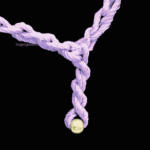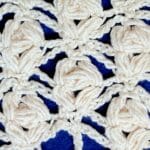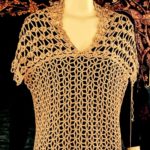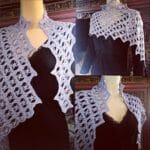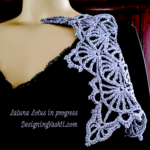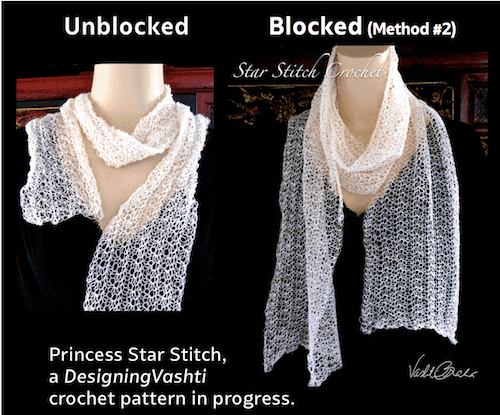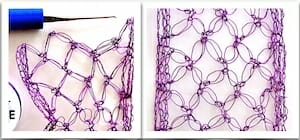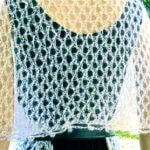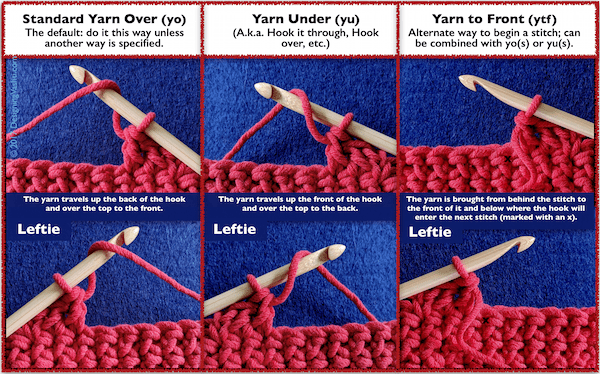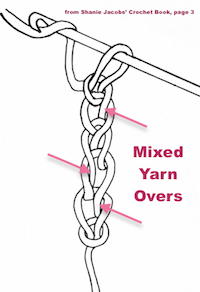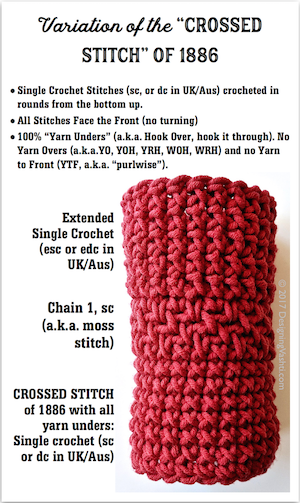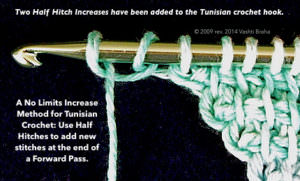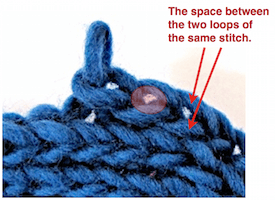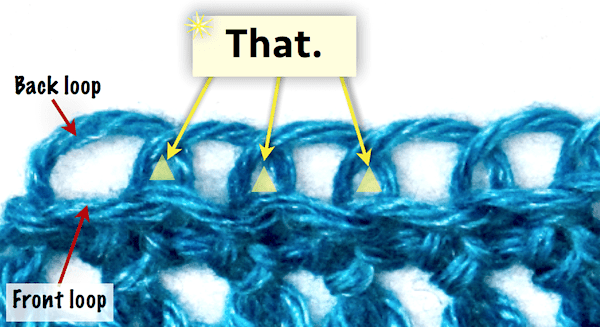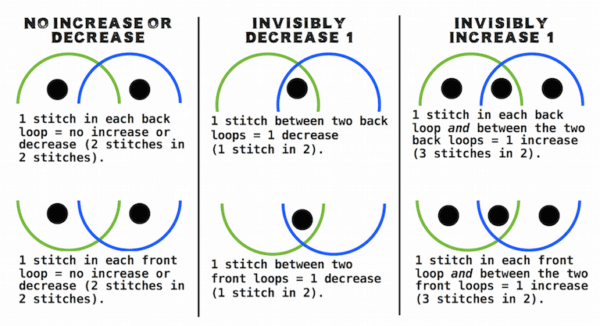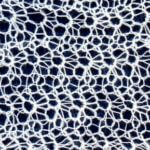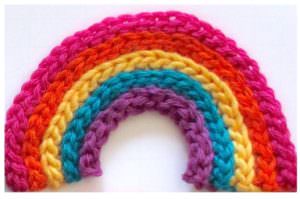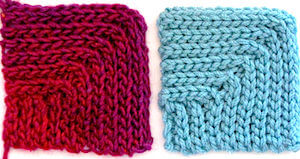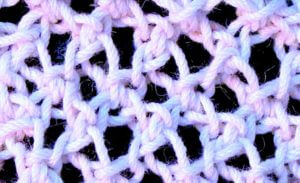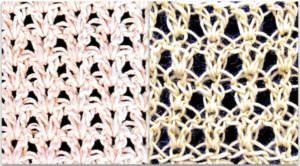Long term projects define my life in crochet.
Sure, a crocheted item can be quick and easy, but I mean producing patterns, teaching, and other business-oriented projects. For example, I completed two interesting Tunisian crochet patterns in 2017 that will appear in a 2018 book.
I should do this review every year! It’s easy to lose sight of the wins when so many projects are complex or long-term.
Favorite discoveries in 2017
Discoveries about crochet are what motivate me to design and teach!
- Crocheting a twisted loop fringe edging at the start of a row is so promising! Make it any length. Add beads to it without stringing them on first. I discovered this with Aquarienne. It was also the perfect thing for the border of Graven.
- Discovering which crochet stitches are “self-healing” when you cut them (and why) is a game changer! See Zumie. Scroll down to see Lovatar.
- My experimental yoke worked! The yoke of the Tripuff Tunic is just a draped scarf.
- Rosepuff inspired new clustered puff swatches that make me swoon, like the one above.
- I made too many discoveries that are too technical to go into while covering bangles with crochet in December and January! It was completely inspiring and rejuvenating.
- When I matched my yarn stash to a favorite silk skirt I discovered two things. First, using the skirt’s colors is a tribute to a favorite thing that can inspire me indefinitely (past the life of the skirt). Second, I also matched my yarn colors to a favorite painting and realized chances are good that the yarns you add to your stash also correspond to the colors of favorite items because you are the common denominator.
DesigningVashti 2017 by the Numbers
- Our Lotus yarn in magazines: Morning Dew Wrap by Kristin Lynn and I Do Shawl by Cindy Adams, both in Crochet! Magazine. I published two of my new Lotus patterns, Rosepuff Shawlette and Aquarienne. Two new Tunisian designs coming out in a 2018 book will also feature Lotus yarn.
- 12 blog posts in 2017 (monthly is ok but my overall average is 17.5 posts per year and I’d like it higher than that).
- 6 newsletters, so they came out bimonthly in 2017. Originally (2010) they came out every other Thursday. Overall, the average frequency is monthly. The six topics in 2017 were Hidden Pictures in Cut Stitches, Crocheted Ruffles, New/Favorite Stitch Patterns, Edgings That Multitask, Announcing a Ruana DAL-CAL, and Yarn Overs & Yarn Unders.
- Posted 18 different crochet tips for new crocheters in Facebook and Twitter. One of them became a full blog post.
Favorite Designs in Development
2017: Big Year for Business Improvements
- Renovated a seven years old website. I’m still cleaning up broken links and stuff. This 2017 project is spilling over into 2018.
- Found someone who makes wonderfully intuitive stitch diagrams for my patterns. An easy win!
- Acquired what we affectionately call a ‘warehouse’ for my shop yarns and hooks (it’s a small Rubbermaid shed). Did important maintenance on my Lotus yarn equipment myself. Got some helpful IKEA office items.
- Taught a weekend crochet workshop at Mosaic Yarn Studio and got up to speed using Airplay instead of an overhead projector. I loved using that set up.
- Videos -deep breath- learned how to edit footage, and what filming equipment I wish I had, so I’m further along than in 2016; a hurricane put a dent in that momentum. For 2018 I figure I’ll try again keeping it simple, short, casual. Otherwise I’ll never get anywhere! Ellen Gormley and Mary Beth Temple inspire me.
- Digitized crochet archives: In 2017 I started a process that works for me. (It also helped me during Hurricane Irma!) Here are my stats: I have 4 or 5 shelves of stuff to digitize; each shelf is 20″ wide. If I’m getting 15 to 18 images per shelf inch, I’ll need 4.5 to 8 gigabytes of storage.
A Year’s Worth of Crochet
I can see why bloggers do a year-end review now that I’ve done it. It feels good to see a year’s worth of highlights–you’ve always done more than you remember. I appreciate everything more. It’s easier to be objective about what is significant. I can see what obstacles I overcame, and what it took to do so, instead of expectations I had at the time that I didn’t meet.
I love to see the glimmerings of 2018 crochet in 2017.
